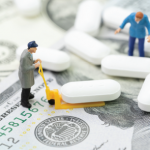Many new cancer medicines are debuting with price tags exceeding $100,000 for a course of therapy, the authors note. And the average price of insulin for diabetes has surged 300% from 2002–2013.
Doctors, too, are part of the problem because they don’t necessarily consider costs even when comparable alternatives are available at wildly different prices, the authors note.
This problem persists in part because drug costs can vary by health plan and not all patients have the same out-of-pocket fees, notes Stacie Dusetzina, a pharmacy researcher at University of North Carolina at Chapel Hill who wasn’t involved in the study.
“If the provider and patient had reliable information about the price of different treatment options then they might consider prescribing or using the less expensive drug—saving both the health system and, possibly the patient, money,” Dusetzina says by email.
One fix to this might be an idea known as value-based pricing, which weighs both the cost and benefit of medicines. This approach would marry appropriate prices to lower costs for patients, because higher out-of-pocket fees are generally driven by steep price increases, notes Dr. Peter Bach, director of the Center for Health Policy and Outcomes at Memorial Sloan Kettering Cancer Center in New York.
“But to be clear, I believe that we should not put patients in the position where they are being asked to make therapeutic tradeoffs against their own economic ones,” Bach, who wasn’t involved in the study, adds by email.


